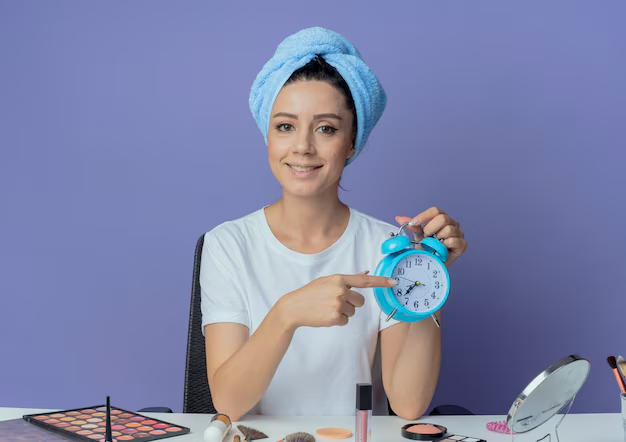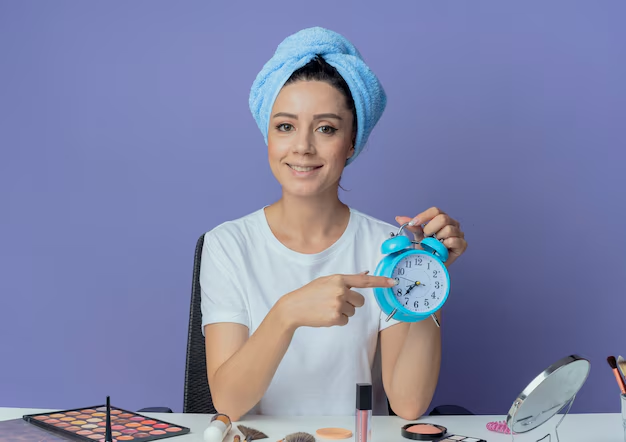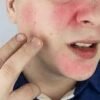A Beginner’s Guide to Building Your Perfect Skincare Routine
Skincare is more than just a daily habit; it’s a vital part of maintaining healthy, glowing skin. A proper skincare routine can help prevent acne, treat wrinkles, and keep your skin looking its best. Whether you’re new to skincare or looking to refine your routine, this guide will help you build a perfect regimen tailored to your skin’s needs.

Understanding Your Skin Type
Before diving into the products, it’s crucial to understand your skin type. Your skin type determines the kind of products you should use and how you should use them. Here are the main skin types:
1. Oily Skin
Characterized by excess sebum production, oily skin often appears shiny and is prone to acne and enlarged pores. Look for oil-free or non-comedogenic products that won’t clog your pores.
2. Dry Skin
Dry skin lacks moisture and can feel tight, flaky, or rough. Hydrating products that lock in moisture are essential for this skin type.
3. Combination Skin
Combination skin features both oily and dry areas. Typically, the T-zone (forehead, nose, and chin) is oily, while the cheeks are dry. Products that balance moisture and oil are ideal.
4. Sensitive Skin
Sensitive skin can react to products with irritation, redness, or burning. Gentle, fragrance-free, and hypoallergenic products are best for sensitive skin.
5. Normal Skin
Normal skin has a balanced amount of oil and moisture. It’s not too oily or dry and typically has fewer skin problems. A variety of products can work well for this skin type.
Step-by-Step Skincare Routine
A basic skincare routine includes cleansing, toning, and moisturizing. Depending on your skin’s needs, you can add other steps. Here’s a comprehensive guide:
Step 1: Cleansing
Cleansing removes dirt, oil, and impurities from your skin. Choose a cleanser suitable for your skin type. For example, gel or foam cleansers work well for oily skin, while cream cleansers are great for dry skin.
How to Cleanse:
- Use lukewarm water to wet your face.
- Apply a small amount of cleanser and gently massage it into your skin.
- Rinse thoroughly and pat dry with a clean towel.
Step 2: Toning
Toners help remove any leftover impurities, balance your skin’s pH, and prepare it for the next steps in your routine. Choose an alcohol-free toner to avoid drying out your skin.
How to Tone:
- Apply toner to a cotton pad or your hands.
- Gently sweep it over your face and neck.
Step 3: Moisturizing
Moisturizing is essential for all skin types to maintain hydration and protect the skin barrier. Choose a moisturizer that suits your skin type.
How to Moisturize:
- Apply a small amount of moisturizer to your face and neck.
- Gently massage it in until fully absorbed.
Step 4: Sun Protection (Morning Routine)
Sunscreen is crucial to protect your skin from harmful UV rays, preventing premature aging and reducing the risk of skin cancer.
How to Apply Sunscreen:
- Apply a broad-spectrum sunscreen with at least SPF 30.
- Use it as the last step in your morning routine, after moisturizing.
Additional Steps
Depending on your skin concerns, you may want to add the following steps:
Exfoliation
Exfoliation removes dead skin cells, promoting cell turnover and leaving your skin smooth and radiant. However, over-exfoliation can cause irritation, so it’s best to exfoliate 1-3 times a week.
How to Exfoliate:
- Choose a chemical exfoliant (like AHAs or BHAs) or a gentle physical scrub.
- Apply it after cleansing and before toning.
- Follow the product instructions carefully.
Serums
Serums are concentrated treatments that target specific skin concerns, such as aging, dark spots, or hydration. They contain active ingredients like hyaluronic acid, vitamin C, or retinol.
How to Apply Serums:
- Apply a few drops of serum to your face and neck.
- Pat it in gently with your fingertips.
Eye Cream
Eye creams are formulated to address concerns like puffiness, dark circles, and fine lines around the delicate eye area.
How to Apply Eye Cream:
- Use a small amount and gently tap it around your eyes with your ring finger.
Tips for Building Your Routine
1. Start Simple
If you’re new to skincare, start with the basics: cleansing, moisturizing, and sun protection. Once your skin adjusts, you can gradually introduce additional steps.
2. Patch Test New Products
Before incorporating a new product into your routine, do a patch test to check for any adverse reactions. Apply a small amount to a discreet area and wait 24 hours.
3. Consistency is Key
Consistency is crucial for seeing results. Stick to your routine daily, and be patient, as it can take weeks to notice improvements.
4. Listen to Your Skin
Pay attention to how your skin reacts to products. If you experience irritation or breakouts, reassess your routine and consider switching products.
Common Skincare Myths
1. Oily Skin Doesn’t Need Moisturizer
Even oily skin needs hydration. Skipping moisturizer can lead to more oil production and breakouts.
2. Natural Ingredients are Always Better
Not all natural ingredients are suitable for everyone. Some can cause allergies or irritation. Always choose products based on your skin type and concerns.
3. Expensive Products are More Effective
Price doesn’t always determine effectiveness. Many affordable products work just as well, if not better, than high-end ones. Focus on ingredients and formulations that suit your skin.
Seasonal Variations in Pollution and Their Effects on Skin and Hair
Conclusion
Building the perfect skincare routine takes time and experimentation. Start with understanding your skin type, then gradually introduce products that address your skin’s needs. Remember to be consistent and listen to your skin’s feedback. With the right routine, you’ll be on your way to healthy, glowing skin.








Leave a reply